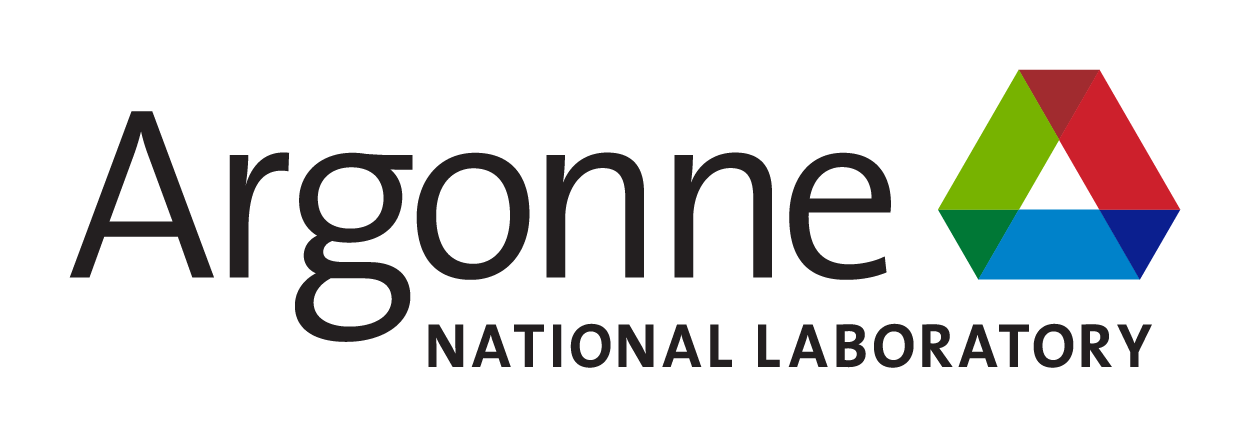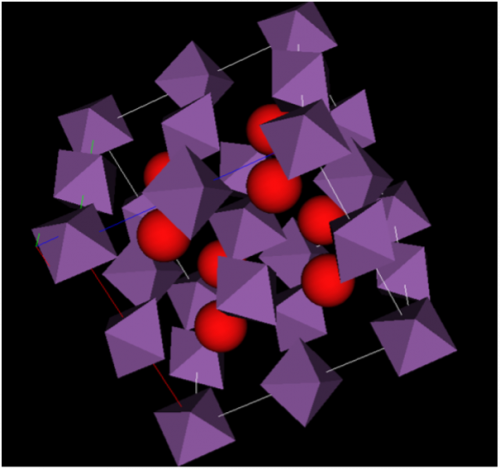
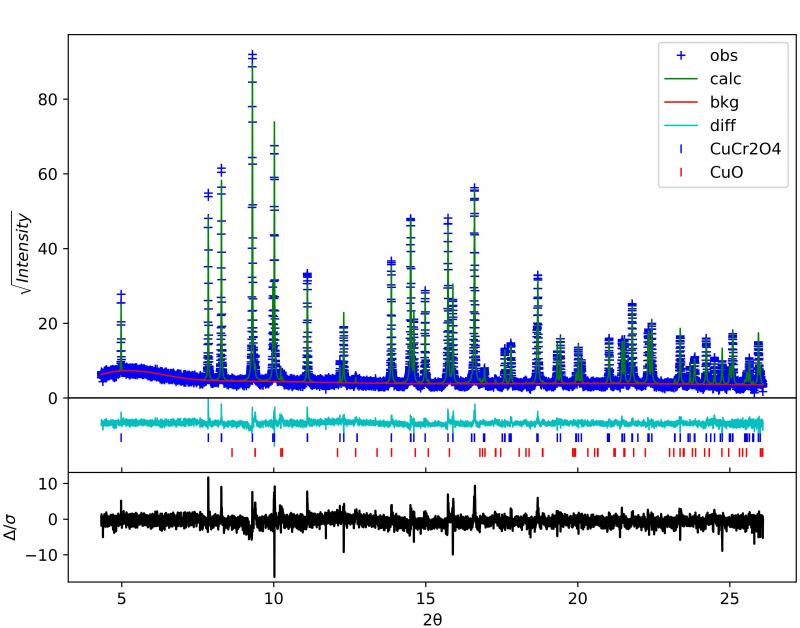
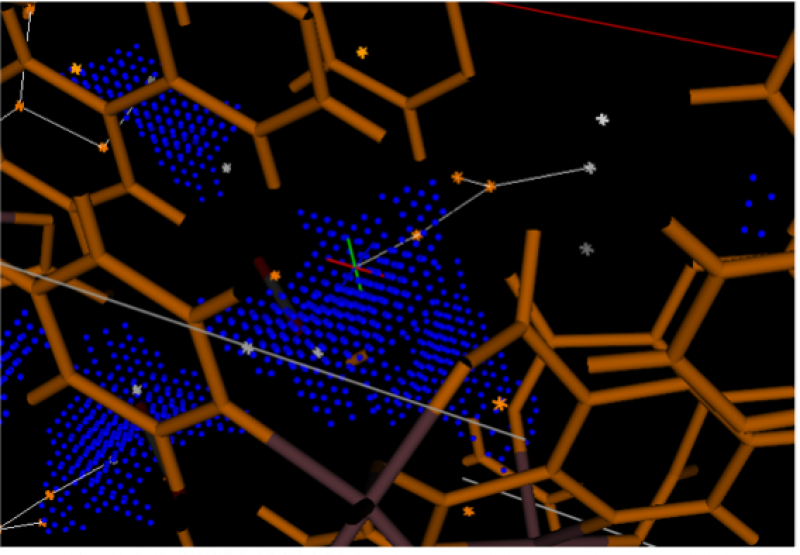
GSAS-II (General Structure Analysis System, II) is a comprehensive tool for the calibration, reduction and analysis of all types of x-ray and neutron diffraction data, including single-crystal and powder data, including constant-wavelength, pink-beam and time-of-flight data types and from lab, synchrotron, spallation and reactor sources. Its primary use is for determination of crystal structures and diffraction-based materials characterization for crystalline solids on all complexity scales, from metals through proteins. Crystal structure solution from powder or single crystal data can be achieved via charge flipping or Monte Carlo methods. Refinements can combine measurements from multiple data types and large groups of data can be analyzed together via "sequential fitting". It also provides powerful and flexible capabilities for integration of 2D powder diffraction image data. In addition to single-crystal and powder diffraction, GSAS-II offers small-angle scattering and reflectometry analysis over all length scales, and interfaces to several other types of analysis tools, such as for small and large box pair distribution function analysis, faulted materials simulation, maximum entropy Fourier maps and symmetry analysis.
GSAS-II offers extensive visualization capabilities and a complete GUI implementation. An applications-interface (API) allows for scripted use of much of the GSAS-II functionality, which has seen significant recent use for AI applications.
Many capabilities of GSAS-II are unique to GSAS-II or are only found in software with very limited scope. For magnetic scattering, all possible subgroups can be derived and explored. For incommensurate structures, a generalized form of 3+1 superstructures can be handled. From powder diffraction, GSAS-II supports all stages of data reduction and analysis, including area detector calibration and integration, pattern indexing, LeBail and Pawley intensity extraction and peak fitting. Pair distribution functions (PDF) can be computed from high-energy x-ray diffraction. Instrumental profile parameters can be fit to data from standards or derived from fundamental parameters; sample profile effects (crystallite size and microstrain) are treated independently from the instrument. Sequential fitting is a novel process that allows large numbers of data sets, measured with parametric changes in measurement settings, to be fit via single refinements with subsequent parametric fitting of results.
GSAS-II is primarily written in Python and is freely distributed as open-source software and installers are provided for Windows, MacOS, Linux and Raspberry Pi computers.
Project members
- Robert B. Von Dreele
- Brian H. Toby
Project publications
- Toby, B. H. and R. B. Von Dreele (2013). "GSAS-II: The Genesis of a Modern Open-Source All-Purpose Crystallography Software Package." Journal of Applied Crystallography 46: 544-549.
- Toby, B. H. (2024). "A simple solution to the Rietveld refinement recipe problem." Journal of Applied Crystallography 57(1): 175-180.
- Denney, J. J., G. S. Mattei, M. H. Mendenhall, J. P. Cline, P. G. Khalifah and B. H. Toby (2022). "Determination of physically based pseudo-Voigt powder diffraction profile terms from the fundamental parameters approach." Journal of Applied Crystallography 55(2): 289-295.
- Von Dreele, R. (2019). "Protein refinement with GSAS-II." Powder Diffraction 34: S32-S35.
- Ginell, K. M., C. Horn, R. B. Von Dreele and B. H. Toby (2019). "Materials for learning use of GSAS-II." Powder Diffraction 34(2): 184-188.
- O’Donnell, J. H., R. B. Von Dreele, M. K. Y. Chan and B. H. Toby (2018). "A Scripting Interface for GSAS-II." Journal of Applied Crystallography 51(4): 1244-1250.
- Von Dreele, R. (2017). "Stochastic and Deterministic Crystal Structure Solution Methods in GSAS-II: Monte Carlo/Simulated Annealing Versus Charge Flipping." Crystals7(9).
- Toby, B. H. and R. B. Von Dreele (2014). "What’s new in GSAS-II." Powder Diffraction29(S2): S2-S6.
- Von Dreele, R. B. (2014). "Small Angle Scattering Data Analysis in GSAS-II." Journal of Applied Crystallography 47(6): 1784-1789.
- Von Dreele, R. B., S. M. Clarke and J. P. S. Walsh (2021). “‘Pink’-beam X-ray powder diffraction profile and its use in Rietveld refinement.” Journal of Applied Crystallography. 54(1): 3–6.
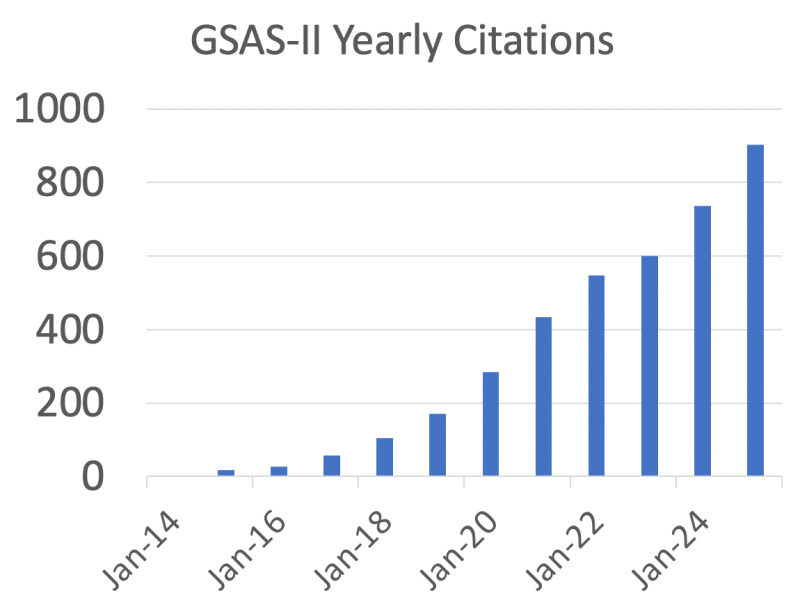
Project impact
GSAS-II is widely used across all U.S. User Facilities and was cited in nearly 700 articles in 2023 alone.
For more infomation
See the GSAS-II home page
